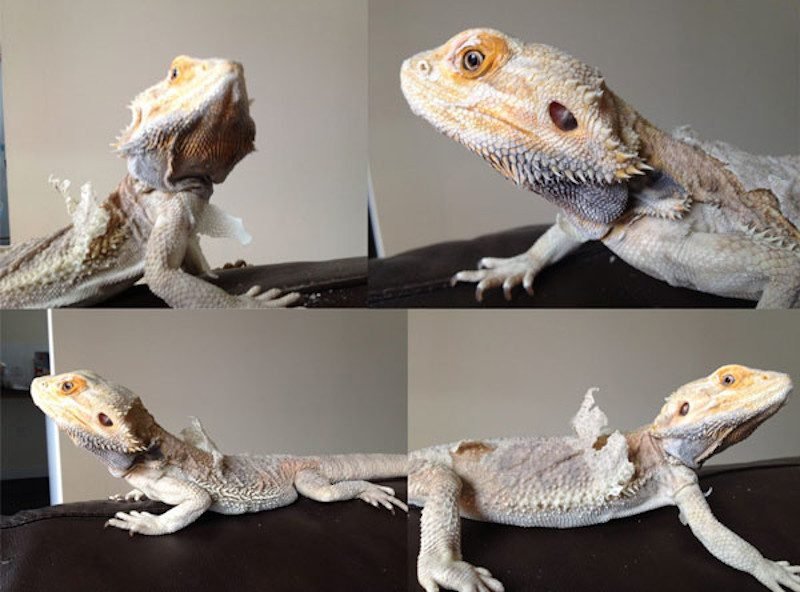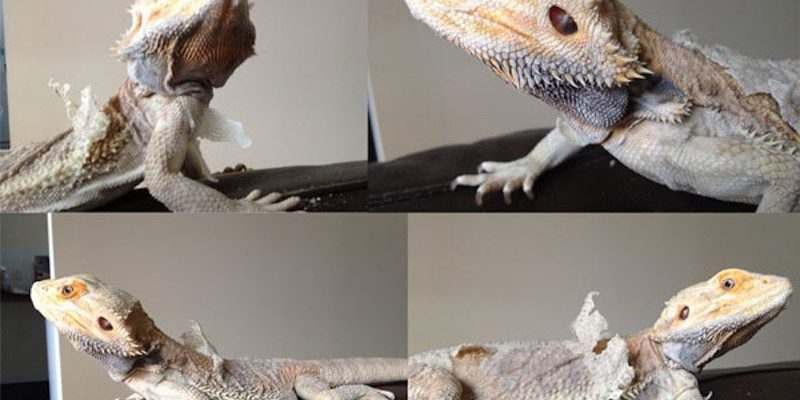
Understanding shedding is essential for every bearded dragon owner. It’s a bit like having a pet that goes through seasonal changes. You might be wondering how often it happens or what you can do to help your scaly friend during this time. Don’t worry! We’ll dive into everything you need to know, from the signs of shedding to providing the right environment to make the experience as smooth as possible. So grab a cup of coffee, and let’s explore the ins and outs of shedding in bearded dragons.
What Is Shedding and Why Does It Happen?
Shedding, also known as ecdysis, is the process through which bearded dragons lose their old skin. You might think of it as a natural refresh for your lizard. Young bearded dragons shed more frequently than adults, usually every few weeks, while older dragons may shed less often but in larger pieces. Shedding is vital for their growth and health—it’s how they refresh their skin and, in some cases, remove parasites or damaged skin.
Here’s the thing: shedding can vary based on a few factors. For instance, a young dragon still growing will shed more often than an adult one who’s reached its full size. Seasonal changes, lighting, and even diet can influence how your bearded dragon experiences this process. So if you notice your pet shedding more than usual, it might be worth looking into their habitat conditions or diet.
Signs of Shedding in Bearded Dragons
You might notice some subtle signs that your bearded dragon is about to shed. Common indicators include dull skin, a change in behavior, and a loss of appetite. It’s a little like being groggy before waking up fully, right? Here’s what to keep an eye out for:
- Dull Skin: Before shedding, your dragon’s skin may look cloudy or dull. This change indicates that it’s time for a new layer.
- Behavior Changes: Your bearded dragon might become more irritable or hide more often. It’s like being in a cranky mood before a big event!
- Loss of Appetite: If your dragon isn’t as interested in food, it could be focused more on shedding. They often eat less before going through this process.
If you notice these signs, don’t panic! It’s a natural part of life for your dragon. Just be prepared to help them through it.
How Long Does Shedding Last?
The duration of shedding can vary. Typically, bearded dragons take about one to two weeks to shed. It’s not an overnight process; rather, it occurs gradually. You might see flakes of skin starting to appear, and in some cases, your dragon might look like it’s wearing a patchy outfit as it loses its old skin.
You know how when you’re peeling a sunburn, it can be a bit itchy? In the same way, your bearded dragon might feel a little uncomfortable during this time. They may rub against rocks or branches to help with the shedding process, similar to how we might scratch an itch. It’s perfectly normal!
Creating a Comfortable Shedding Environment
One of the best things you can do for your bearded dragon during shedding is to create a supportive environment. This means paying attention to their habitat’s humidity, temperature, and overall care. Here are a few things you can do:
1. Humidity: Keep the humidity levels in their tank appropriate, around 30-40%. Too low, and it can be hard for them to shed. Too high, and it could lead to other health issues.
2. Heat: Ensure that your dragon has a proper temperature gradient in their tank, allowing them to bask in warmth and cool down as needed. This balance helps them feel comfortable and aids in the shedding process.
3. Hiding Spots: Provide plenty of hiding spots in their enclosure. It gives your dragon a safe space if they feel more vulnerable during this time.
By ensuring their space is comfortable, you can help reduce stress and make shedding much easier for your little buddy.
How to Help Your Bearded Dragon Shed
Sometimes, your bearded dragon might need a little extra help to shed smoothly. Here are some simple things you can do to assist them:
– Soaks: Give your dragon a gentle soak in lukewarm water for about 15-20 minutes. This can help loosen the old skin and hydrate them.
– Gentle Scrubbing: If your dragon is comfortable, you can use a soft toothbrush to gently scrub areas where the skin is stubborn. Just be gentle—think of it as giving them a little spa treatment!
– Proper Diet: Ensure they’re eating a balanced diet rich in moisture—think greens and occasional fruits. Hydration can make shedding easier.
Just remember, patience is key! Shedding is part of their natural life cycle, and with your support, they’ll get through it.
When to Be Concerned About Shedding
In most cases, shedding is nothing to worry about. However, there are moments when you should pay extra attention. Here are a few red flags to watch for:
– Incomplete Shedding: If patches of skin are stuck, especially around the toes and eyes, this could cause problems. If you see this, you might need to help them gently remove it or consult a vet.
– Bleeding or Sores: If you notice bleeding or sores underneath the shed skin, it’s essential to contact a veterinarian. It could signal an underlying health issue.
– Excessive Shedding: If your dragon is shedding continuously or too frequently, it may indicate stress, illness, or habitat issues. Monitoring their behavior closely can help you spot any potential problems early.
Being aware of these signs helps you take the right action quickly, ensuring your dragon’s health and comfort.
Final Thoughts on Shedding and Care
Shedding is a normal, healthy part of your bearded dragon’s life, and understanding it helps you care for your pet better. With the right environment, a bit of patience, and some TLC, you can help your dragon through this process without a hitch.
Remember, as their caretaker, your role is to support them during shedding just as you would in other aspects of their life. So keep a close eye on them, provide the right care and conditions, and soon enough, they’ll be back to their adorable selves—just a little shinier!
By being informed and proactive, you’ll foster a happy, healthy environment for your scaly companion. So go ahead, embrace the shedding season; it’s just another part of the unique journey you share with your bearded dragon!

